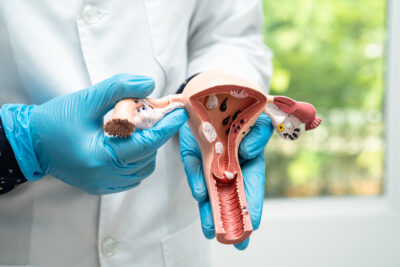The researchers first categorized patients based on when the attack began. One third of the people asked reported morning attacks, 40% experienced migraine in the afternoon/evening, while a third couldn’t specify a certain time of the day. Then they looked at how people in each group processed emotions by showing them images of faces with different emotional expressions.
 “Our findings from previous research indicate that migraineurs tend to process emotions somewhat differently than healthy people. This time we focused on any potential difference among migraine subgroups” – said Gabriella Juhász, associate professor at the Department of Pharmacodynamics, Faculty of Pharmacy, Semmelweis University.
“Our findings from previous research indicate that migraineurs tend to process emotions somewhat differently than healthy people. This time we focused on any potential difference among migraine subgroups” – said Gabriella Juhász, associate professor at the Department of Pharmacodynamics, Faculty of Pharmacy, Semmelweis University.
In the two studies conducted, they found differences among groups in their response to images showing fearful faces at parts of the brain responsible for processing pain and sensory related information.
However, which group showed differences, varied. In the first study, the evening group showed more enhanced activity compared to the morning group. In the second one, researchers recorded increased activity in the morning group compared to the mixed onset group.
Migraine is caused by various (environmental, hormonal, genetic) factors including ones related to our biological rhythm. The quality and quantity of sleep as well as hormonal changes prior to waking up may trigger morning attacks, while external factors such as stress at work or school can be a reason for migraines in the evening.
Therefore, identifying what causes an attack can be the pathway to more targeted treatment.
Today, only a fraction of people responds (well) to treatment. If we can categorize patients into subgroups and pinpoint the related causes such as time of day and alterations in biological processes, e.g in sleep patterns, we may be able to treat them more effectively
– Juhász says.
For successful treatment, time is also key. Patients who can recognize warning signs early on may be able to head off migraine or keep it from getting worse. Slow-release drugs are available for patients with migraine in the morning but they have to be taken at bedtime. In the case of morning migraines, investigating and treating sleeping problems may also help. Those suffering from pain in the afternoon should try and reduce stress or apply techniques to manage it, the expert notes.
Migraine is a major global health issue that affects over 10% of the population. It is the second leading cause of years lived with disability worldwide and the leading one for young, productive women.
You can find the full study here.
Photo: Bálint Barta – Semmelweis University


